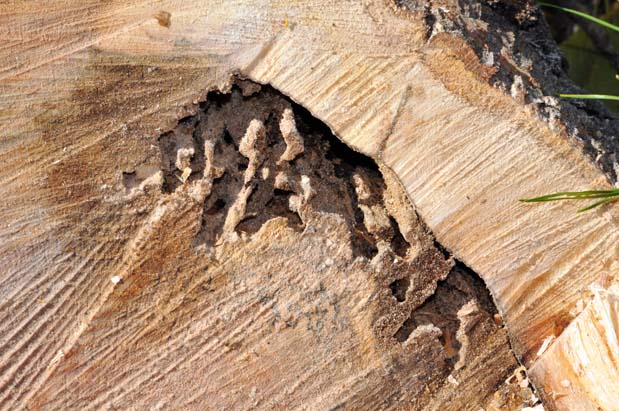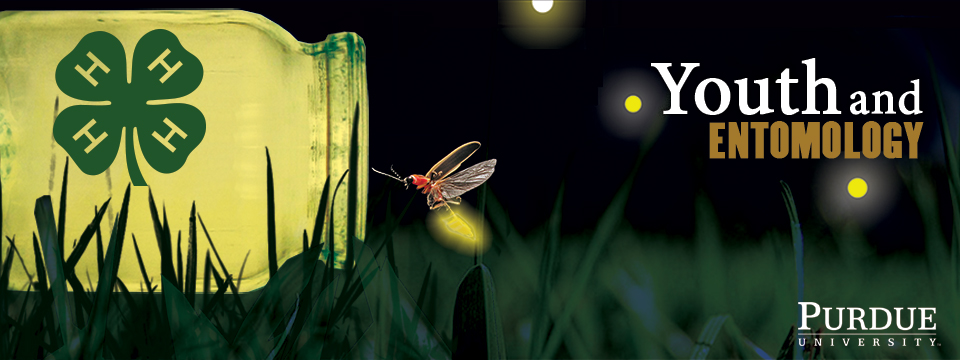

|
|
Carpenter Ant damage
(John Obermeyer, Purdue University) |
|
Common Name: Carpenter Ant - damage
See also: adult Scientific Name: Formicidae: several species Status: usually beneficial, occasionally a pest of homes and buildings Damaging Stage: adult Injury: Most carpenter ants are beneficial insects. Outdoors they may offer plant protection by consuming potential pest insects, and they also facilitate the breakdown of dead trees on a forest floor. Carpenter ants do not eat wood but they often nest in moist wood, including rotting trees, tree roots, tree stumps, and logs or boards lying on or buried in the ground. They can also nest in moist or decayed wood inside buildings. Nests have been found behind bathroom tiles, around tubs, under roofing, in attic beams, and under subfloor insulation. The ants may cause damage to structures when they nest in or hollow out wood boards for shelter. Action Threshold: Presence of adults may not be a good indicator of an infestation because ants are known to forage quite widely. If piles of sawdust are found in an area of high ant activity, it is likely that the ants are nesting close by. Nesting also may be a good indicator that a water problem exists or has existed in recent times. In cases of severe infestation, a professional consultant should be called to treat the building. Management: Chemical controls are usually the best option for a carpenter ant infestation inside a building when the nest can be located. Ant baits are effective when properly used to control foraging ants. |
 |
||||||||||||||||
|
|
|||||||||||||||
|
Purdue Extension Entomology, 901 West State Street, West Lafayette, IN 47907 USA, (765) 494-4554 Department of Entomology | College of Agriculture | Extension © Purdue University | An equal access/equal opportunity university | Integrity Statement | Copyright Complaints | Maintained by ENTM IT Trouble with this page? Disability-related accessibility issue? Please contact us at entmwebmaster@purdue.edu so we can help. | ||||||||||||||||
